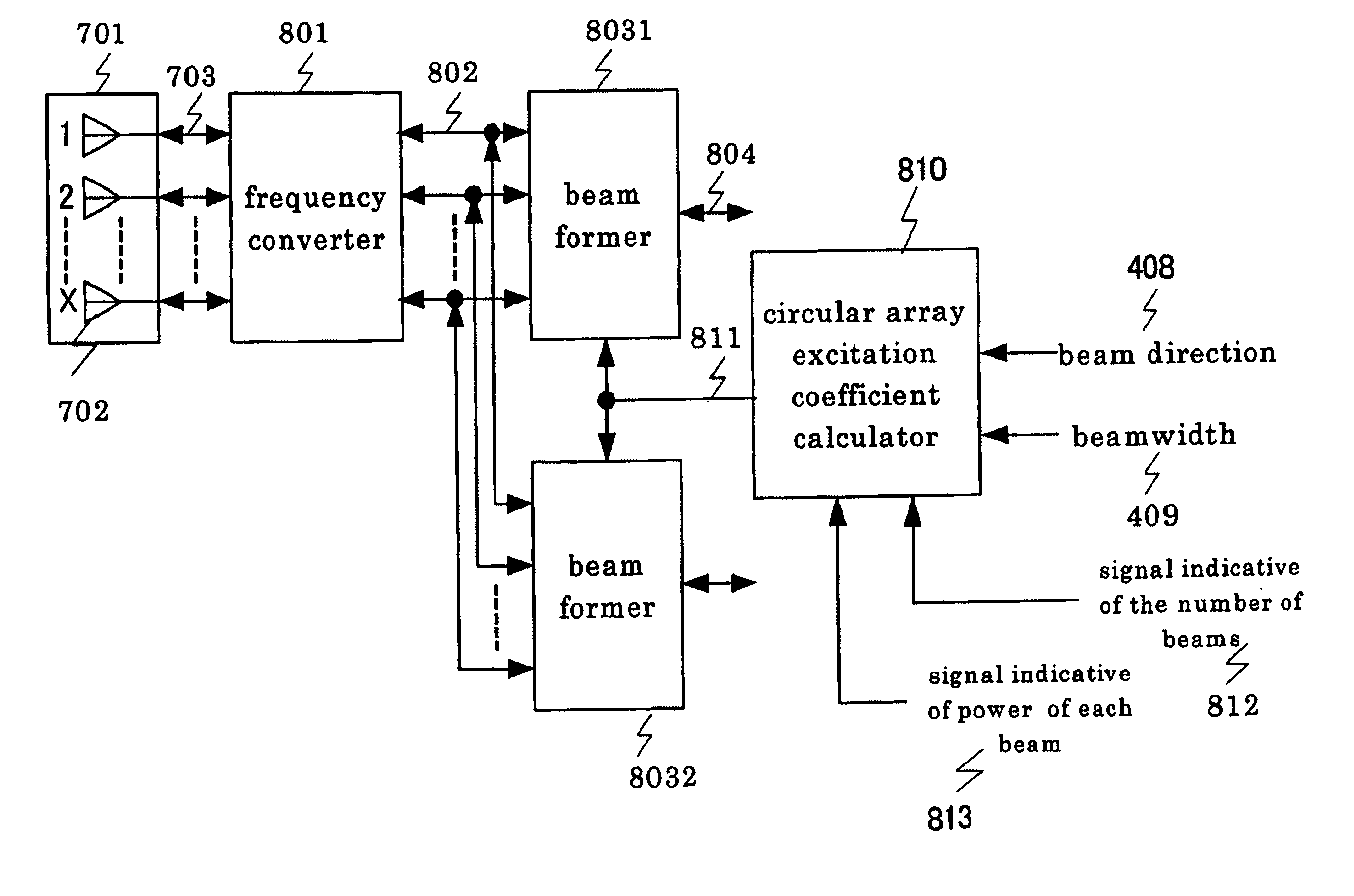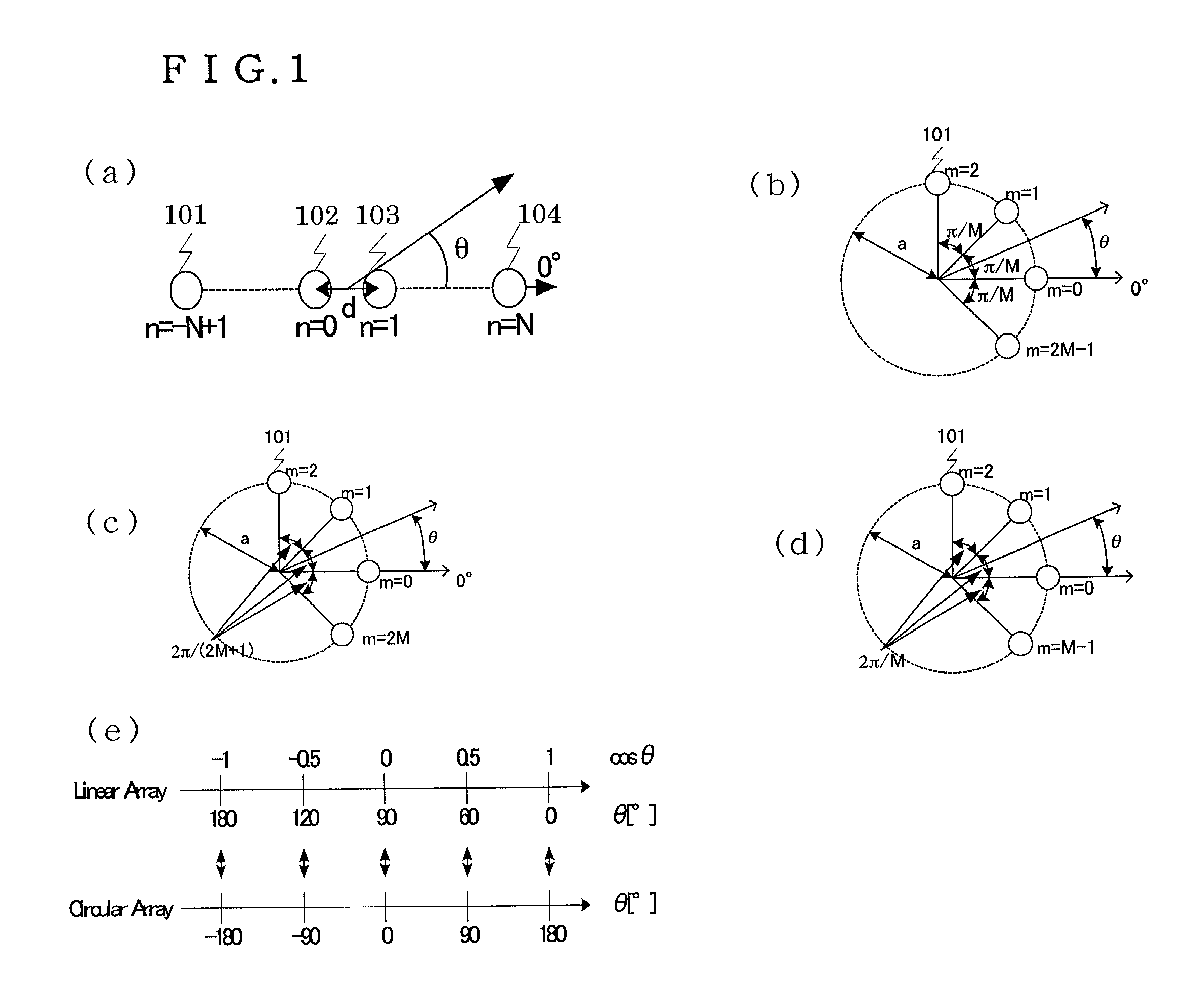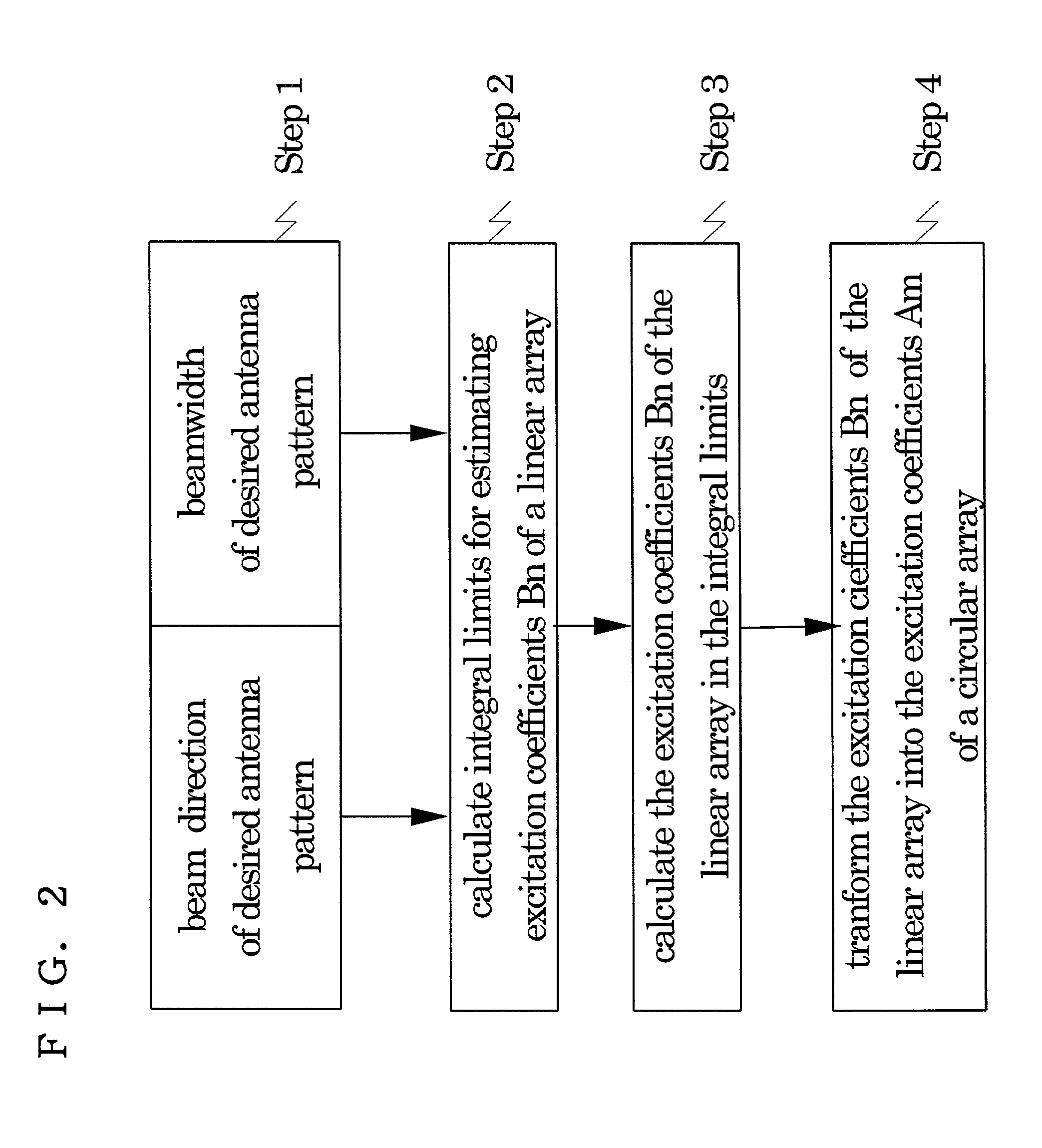Method of calculating exciting coefficients for circular array antenna and radio unit utilizing the same
a circular array antenna and radio unit technology, applied in the direction of individually energised antenna arrays, wireless communication, polarisation/directional diversity, etc., can solve the problems of limited method, inability to obtain desired antenna pattern, and limited method disclosed
- Summary
- Abstract
- Description
- Claims
- Application Information
AI Technical Summary
Problems solved by technology
Method used
Image
Examples
first exemplary embodiment
[0022
[0023]The first exemplary embodiment details a calculating method applied to cases where the number of antenna elements is even (2M).
[0024]FIG. 1(a) shows an arrangement of antenna elements, the number of which is even (2N), of a linear array antenna. In FIG. 1(a), 2N antenna elements 101, 102, 103, 104 are disposed on a straight line at intervals of distance d with antenna element 101 disposed at n=−N+1. Array factor E0(θ) representing an antenna pattern of this linear array antenna, generally, can be expressed as:
[0025]E0(θ)=∑n=-N+1NBnⅇj2πdλ2(2n-1)cosθor(1)E0(θ)=∑n=-NN-1Bnⅇj2πdλ2(2n-1)cosθ(2)
where Bn designates an amplitude and a phase of antenna element n, d is a spacing between the antenna elements, θ is an angle between a beam direction of the antenna pattern and a direction of the linear array (the direction of 0°), and λ is a wavelength of an using radio wave.
[0026]Equation (1) applies to the case of FIG. 1(a) where first antenna element 101...
second exemplary embodiment
[0058
[0059]The second exemplary embodiment details a calculating method applied to cases where the number of antenna elements is odd (2M+1).
[0060]FIG. 1(c) shows an arrangement of antenna elements, the number of which is odd, of a circular array antenna. Antenna elements 101 are disposed counterclockwise at uniform angular intervals of 2π / (2M+1) along a circle with radius a. Specifically, first antenna element 101 is disposed at m=0 (an origin point in the direction of 0° ), and subsequent antenna elements 101 are disposed at m=1, m=2, . . . , m=2M, respectively. The present embodiment differs from the first exemplary embodiment in that a different equation is used for finding an array factor.
[0061]When the number of antenna elements of a linear array antenna is 2N+1, array factor E0(θ) can be expressed as:
[0062]E0(θ)=∑n=-NNBnⅇj2πλndcosθ(15)
where Bn designates an amplitude and a phase of antenna element n, d is a spacing between the antenna elements, θ is an angle between...
third exemplary embodiment
[0066
[0067]The third exemplary embodiment details a method of calculating excitation coefficients for a circular array antenna having an arbitrary number of antenna elements. FIG. 1(d) shows an arrangement of antenna elements, the number of which is arbitrary (M), of a circular array antenna. Antenna elements 101 are disposed counterclockwise at uniform angular intervals of 2πfM along a circle having radius a with first antenna element disposed at an origin point (in the direction of 0°).
[0068]The present embodiment differes from the first exemplary embodiment in that a different equation is used for finding an array factor. When the number of antenna elements of a linear array is N, array factor E0(θ) can be expressed as:
[0069]E0(θ)=∑n=0N-1Bnⅇj2πλndcosθ(17)
[0070]When N is an even number, that is, N=2L, array factor E0(θ) can be expressed as:
[0071]E0(θ)=∑n=-L+1LBnⅇj2πλndcosθor∑n=-LL-1Bnⅇj2πλndcosθ(18)
[0072]When N is an odd number, that is, N=2L+1, a...
PUM
 Login to View More
Login to View More Abstract
Description
Claims
Application Information
 Login to View More
Login to View More - R&D
- Intellectual Property
- Life Sciences
- Materials
- Tech Scout
- Unparalleled Data Quality
- Higher Quality Content
- 60% Fewer Hallucinations
Browse by: Latest US Patents, China's latest patents, Technical Efficacy Thesaurus, Application Domain, Technology Topic, Popular Technical Reports.
© 2025 PatSnap. All rights reserved.Legal|Privacy policy|Modern Slavery Act Transparency Statement|Sitemap|About US| Contact US: help@patsnap.com



